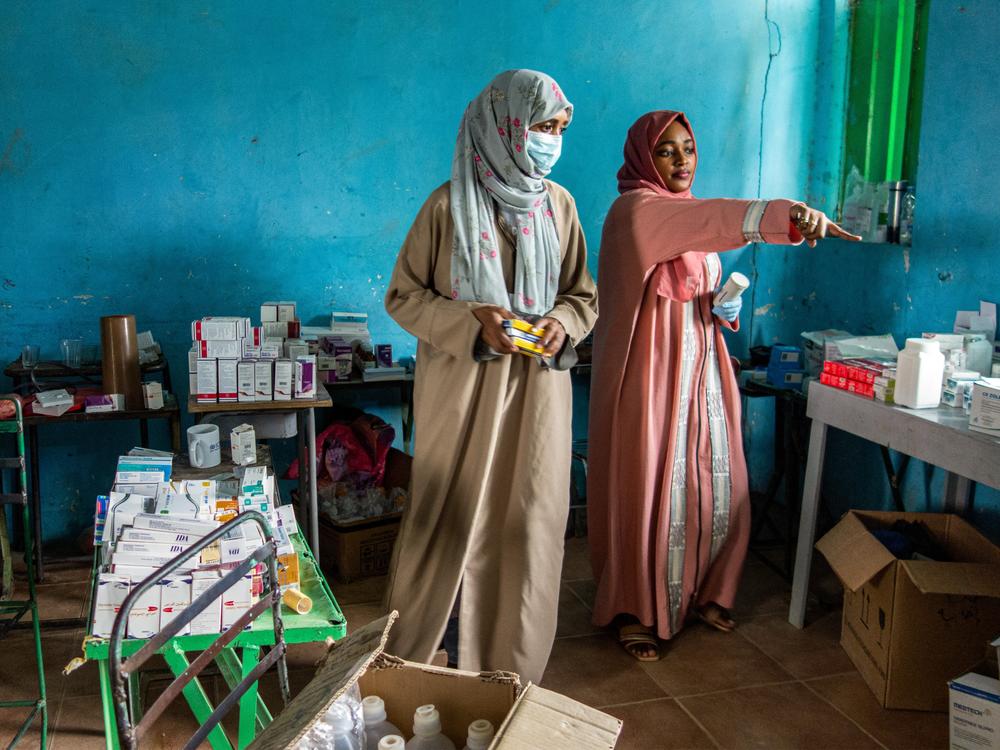Section Branding
Header Content
Attacks on Sudan's hospitals, clinics put millions at risk
Primary Content
On a recent June morning in the Red Sea city of Port Sudan, Tedla Damte, UNICEF Sudan’s chief of health, woke up energized thinking of his plans for the day: a visit to a UNICEF school for displaced children and meetings with the Sudan’s minister of health.
Since the country’s civil war started in April 2023, the veteran humanitarian worker has been trying to manage the massive health crisis unfolding in Sudan. It’s a challenge that most days Damte has been ready to meet. But that day in June, he got a text message from Darfur, on the other side of the country, where fighting has escalated over the past few months.
It was from a colleague, informing Damte that the Saudi hospital there had been attacked and damaged. “And it was really heartbreaking when I heard that the attack also made us lose one of the very seasoned pharmacists who was giving his life in the front and helping the people of Sudan,” Damte said.
That attack was one of several against hospitals in Sudan since the start of June. Armed groups have targeted hospitals, health-care facilities and staff since a power struggle between the Sudanese Armed Forces and the paramilitary Rapid Support forces erupted into civil war. Both sides have been accused of committing war crimes against civilians and against medical facilities and staff.
Damte and officials with other global aid agencies warn that these increasing attacks may soon result in a large loss of life due to lack of health care.
According to UNICEF, at least 77 hospitals across Sudan have come under attack since the war began. Aid groups say that with the extreme fighting that’s resulted in the displacement of more than 7 million people, Sudan has become the largest humanitarian crisis in the world and that the attacks have made it difficult for health workers to respond and provide critical medical services to millions of people.
In the attack on the maternity hospital in Darfur, most of the staff had fled, so it’s unknown how many of them —- or their patients —- were hurt. And earlier in June, Doctors Without Borders told NPR that the one remaining hospital —- South hospital —- in the besieged city of El Fashir in North Darfur was ambushed and looted by armed groups – authorities haven’t been able to confirm exactly who was responsible —- forcing staff there to also flee and leave patients behind.
“But it is not only [the attacks on] hospitals and facilities, but because of the shortages of fuel and health workers, over 70% of the health facilities are literally not providing services in places like Darfur at the moment,” Damte said. More than 10 million people lived in Darfur before the start of the war, according to U.N. estimates.
Most of Sudan’s medical supplies and equipment such as blood banks and public health labs are in the capital Khartoum, a frontline in the conflict, and unreachable. According to Damte, of the 250,000 health workers based at Sudan’s health ministry there, most have fled the country, making the situation all the more difficult for those who remain.
“And on top of that, fearing for their own safety and without guarantee for being protected, health workers are unable to access the facilities in many places and have not been paid in months,” he said.
The need for medical care across Sudan is immense. The World Health Organization reported in June that more than 25 million Sudanese are experiencing acute food insecurity. There have also been several disease outbreaks including cholera, measles, malaria and dengue.
UNICEF’s Damte remembers a woman he met near Sudan’s border with Egypt a few weeks ago, where over a million displaced people were camped out, many sleeping on the desert floor with no shelter and scorpions crawling about. The woman was pregnant with twins and was taken to the nearest hospital when she went into labor.
“And when they get to the hospital, because they didn't have enough supplies in the hospital for the newborn care and one of the babies required a resuscitation … [the baby] passed away,” Damte said.
Of the more than seven million internally displaced people in Sudan, only 2% have access to health care, according to Shashwat Saraf, the East Africa regional emergency director for the International Rescue Committee.
This has led the IRC and other aid organizations, including the World Health Organization, to put into place a new approach to scale up access to people in need: mobile clinics set up wherever is available such as in schools, buildings, even under the shade of trees.
“A lot of our health programming is in the form of mobile health teams, where we are more flexible, more adaptable and have a larger coverage area in terms of meeting people who are on the move,” Saraf said.
But many populated areas —- such as Khartoum, Al Jazeera and Darfur —- remain difficult and dangerous for health workers to access or even send aid supplies. Aid groups say immediate international attention and funding is needed to halt the fighting and prevent a further catastrophic loss of life.

